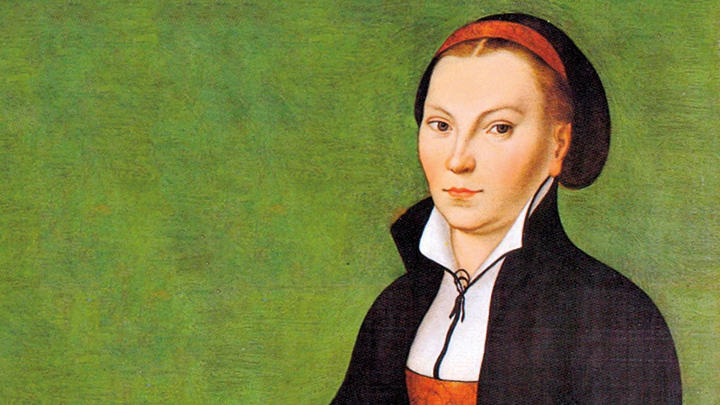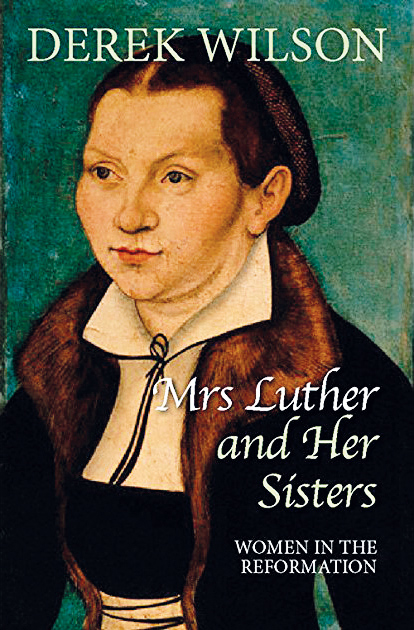Mrs Luther and her sisters
October 1, 2017

You might assume that the extent and contribution to the Protestant Reformation of Martin Luther’s wife, Katie, was simply that she cooked and cleaned for him and his friends, enabling him to write and lecture. But the fact that she was married to Luther at all is emblematic of the transformations Luther’s Reformation unleashed on the medieval world, particularly for women, as a recent book by historian Derek Wilson shows.
Luther was a friar, and as such was expected to be single and celibate. The same was true of Katharina “Katie” Luther, who was a nun. Their marriage was a sign of a world being turned upside down. As significant as Luther’s emphasis on the Bible’s availability to everyone in the pews was, equally important was his idea that every day was a site of holy work. He believed marriage and child-rearing were important activities in the sight of God, as important as—and not distractions from—a life of prayer and contemplation. This is perhaps the bombshell of the Reformation that reverberated the longest across our Western society.
For some nuns, the dismantling of monastic practices was a loss of the stability of their former communal life. For many others such as Katie, however—especially those who were forced into convents by their families (a common practice at the time)—it was a time of freedom to find love, have children and participate in society. Ironically, the education that these women received as nuns made them receptive to the teachings of Lutheranism. Beyond the cloister, new printing methods allowed for a new biblical literacy, and not just for men. It was noted, with incredulity, that women were taking notes during sermons and discussing doctrines afterward. Some women went beyond this, daring to teach and preach to men.

But Luther was no advocate for the feminist movement. Though he praised the business management capabilities of his wife (being inept at doing so himself) he ridiculed female intelligence when it came to theology and philosophy. Luther, who wanted spiritual reform but not socio-political revolution, was concerned about his Reformation getting away from him. Indeed it did, because the rejuvenation of the faith of the people encouraged women to assert their equality before Christ and their fitness to share their learning.
Among the upper and learned classes, women also became patrons of the Reformation, sustaining authors and preachers and influencing rulers. For example, Henry VIII’s last wife, Catherine Parr, was an enthusiast for the new Protestant faith (too much so for Henry) and, as a writer of religious material, she became the first Englishwoman to publish under her own name.
Women not only wrote and translated; they printed as well. Margaretha Pruss was the daughter of a Strasbourg printer who published Lutheran books. When her father died, Margaretha married a printer. When this husband died, she married a second printer, and when he in turn died, she married a third, all in order to continue her ministry of spreading the new faith through print.
At both ends of society, women made bold intrusions into the public world of men, emboldened by Luther’s dismantling of hierarchies imposed by the church of the day. Then, as now, these initiatives were not always welcomed. In less radical fashion, but with wider consequences, women gained new confidence that spiritually important issues did not belong to the elite few but pervaded all of life’s necessary tasks, including cooking and house cleaning.
Derek Wilson, Mrs Luther and Her Sisters: Women in the Reformation, Lion Publishing, 2016.









